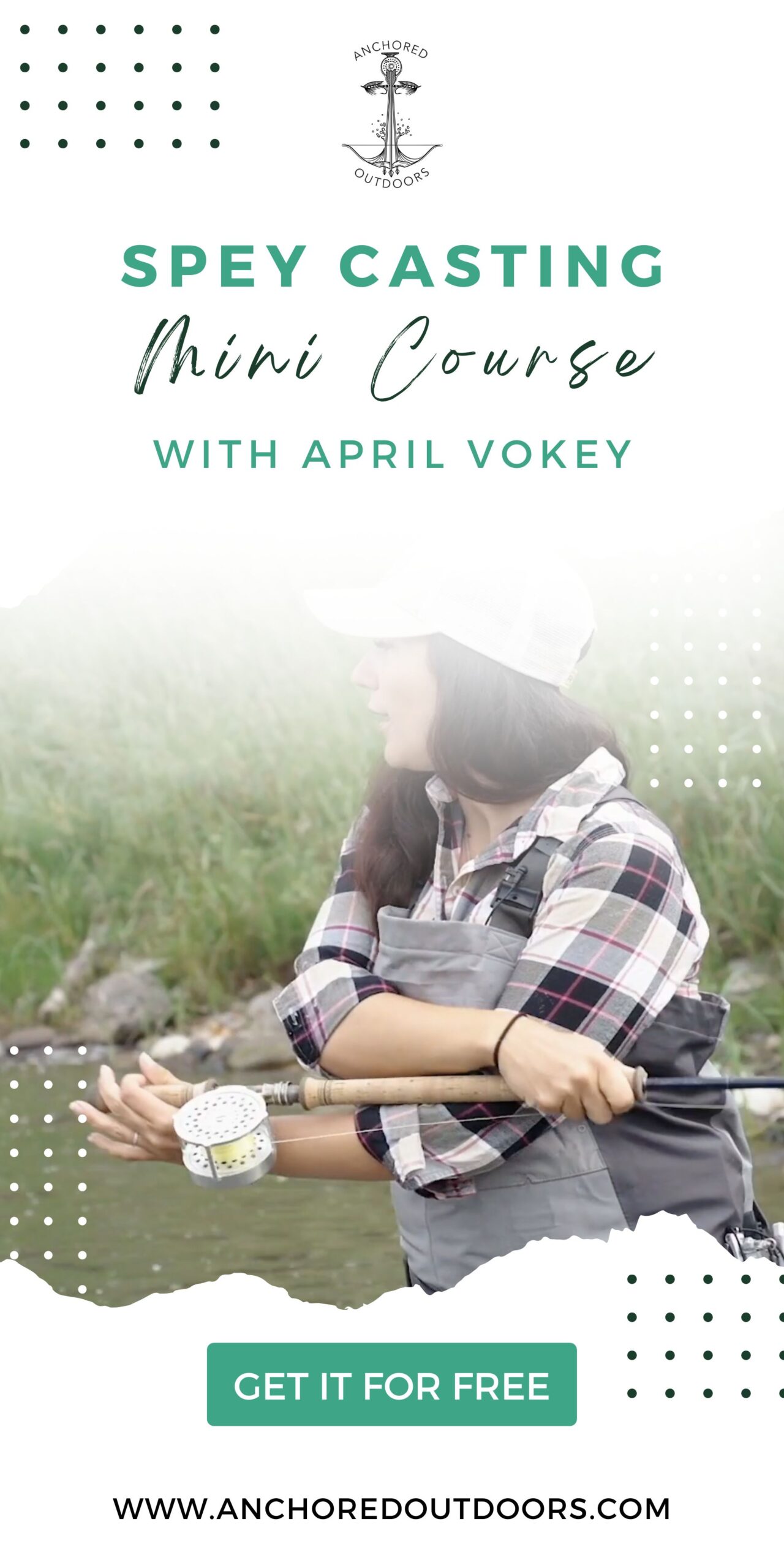He stared at me vacantly, his back hunched and arms folded awkwardly. His bottom hand hovered uncertainly over the butt of his Spey rod.
“The what?!” he asked, squinting as if I’d just asked him to perform a risqué musical striptease.
I laughed and repeated, “The dangle! Let your fly hit a true dangle…”
Stumbling over the rocks to get closer, I explained what I meant. With a relieved smile, he applied my advice to his cast, increasing his success tenfold.
This is a regular occurrence for a full-time guide: a guest unfamiliar with the latest fishing lingo navigating a nine-hour day steeped in steelhead terminology. It’s a reminder that there’s always more to learn. For some, it’s intimidating; for others, confusing; and for many, downright annoying. So, with that in mind, I’ve put together some simple definitions of basic terms you might encounter on your next trip to the river:
Anchor: The part of the fly line, sink tip, or leader touching the water during the sweep and backstroke in Spey casting. It creates “stick” from water tension, preventing the line from jumping out of the water during the D-Loop. If the anchor is “blown,” the line and fly leave the water, causing a failed cast.
Bloody L: A common Spey casting error where the D-Loop fails to align the anchor parallel to the forward cast, resulting in an “L” shape on the water. This leads to a forward cast lacking the energy to properly roll over. It’s usually caused by setting the anchor in an improper position or by an incomplete sweep.
Boot/Tomato: A steelhead that has been in freshwater long enough to take on a darker, rainbow trout-like coloration. Typically used in a derogatory sense.
Bucket: A specific location where steelhead often lie, varying with river conditions. Most runs have one or two “buckets” that consistently produce steelhead due to the structure or bottom configuration.
Cack Handed: A cast where the D-Loop forms on the side opposite one’s primary shoulder, but with the strong hand still on top. For example, a right-handed angler casting with the D-Loop on the left shoulder, still gripping the rod right hand over left, is casting cack handed. Also known as “reverse” casting, as in Reverse Snap-T.
Carrying a Loop: An excess length of line loosely held between the cork and the reel while swinging a fly. The amount varies with personal preference. The idea is that the line will be pulled taut when a steelhead takes, preventing the angler from prematurely setting the hook.
Clipped: A fish with a removed adipose fin, indicating hatchery origin.
Chrome(r): A fresh steelhead without traditional rainbow trout coloration. Steelhead get darker the longer they remain in freshwater. Bright, chrome-colored steelhead are preferred as they are in peak physical condition, having just entered from the ocean.
D-Loop: The “backcast” in Spey casting, where a semi-circular length of line unfurls behind the angler before the forward stroke. The name comes from the shape the line takes in profile.
Dangle (or Hang Down): When the fly completes its swing and hangs parallel to the shore, either in the current or slower water. Steelhead often bite on the dangle or follow the fly from the main current, only to strike after the swing. This technique is especially important in murky water when fish move closer to shore to avoid heavier flows.
Grab/Pull/Pluck: When a steelhead intercepts a swung fly but typically isn’t hooked. The phrase “any grabs?” is often used in place of “catch anything?”
Hen/Buck: Terms used to describe the gender of a steelhead. Bucks (males) have longer snouts and mandibles, while hens (females) have shorter ones.
Kelt: A steelhead that has spawned and is migrating back to the ocean. Encountered in late spring and early summer, it is recommended to avoid fishing for kelts.
Low-Hole: When an angler starts fishing below you without permission, disrupting the downstream progress of steelhead anglers. Low-holing is frowned upon in all steelhead waters.
Overhang: The length of running line extending beyond the rod tip while casting. This is a matter of personal preference, typically ranging from none to over a foot.
Pocket Picked: When another angler hooks a steelhead in water you have just fished. Most often used when discussing runs fished by multiple anglers.
Running Line: The thinner, consistent diameter line behind the belly or head of a line. Running lines come in several types: monofilament, braided, or plastic-coated fly line.
Scandi: Short for Scandinavian, a shooting head line of 30 to 40 feet with a long front taper. It’s popular for casting in summer or fall, though not great for casting large flies or sink tips.
Skagit: A short, heavy shooting head of 20 to 30 feet, designed for casting large, heavy flies with sink tips. Often used in winter steelhead fishing.
Steelhead Green: A term describing river water that has a greenish hue, indicating ideal steelhead conditions.
Stinger Hook: A hook added to the back of a fly, often seen on streamers and modern steelhead flies. It offers better hookup rates, causes less damage to fish, and can be easily replaced if dull.
Swinging: A method of presenting a fly where the fly arcs across the current with a taut line. It covers more water than a dead-drifted presentation.
Tail: Grabbing a steelhead at the “wrist” near the tail to land it. Tailing doesn’t involve a net.
Tank: A deep, slow section of river that often holds fish but is challenging for presenting a swung fly.
Touch a fish: To get a grab or pull from a steelhead, not necessarily to land or physically touch it.
White Mouse: The spray caused when the line is torn from the water and swept into the D-Loop during a waterborne anchor cast, such as a Double Spey.





